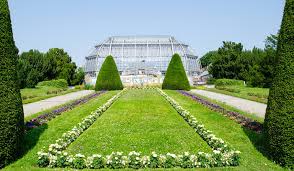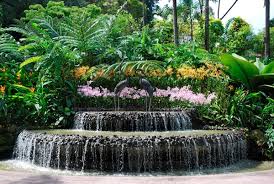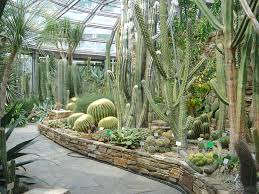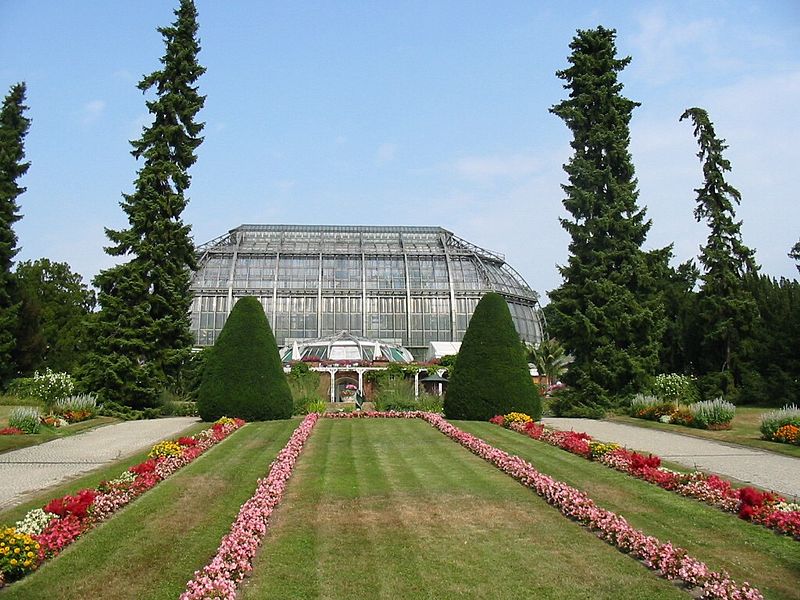The Berlin-Dahlem Botanical Garden and Botanical Museum (German: Botanischer Garten und Botanisches Museum Berlin-Dahlem) is a botanical garden in the German capital city of Berlin, with an area of 43 hectares and around 22,000 different plant species. It was constructed between 1897 and 1910, under the guidance of architect Adolf Engler, in order to present exotic plants returned from German colonies.
The garden is located in the Lichterfelde locality of the borough of Steglitz-Zehlendorf. When it was founded, a part of it was located in Dahlem, a fact that is still reflected in its name. This part of Dahlem became part of Lichterfelde in 1938.
Today, the garden is part of the Free University of Berlin. The Botanical Museum (Botanisches Museum), with a large herbarium (Herbarium Berolinense) and a large scientific library, is attached to the garden.
The complex consists of several buildings and glass-houses, such as the Cactus Pavilion and the Pavilion Victoria (which features a collection of orchids, carnivorous plants and giant white water lily Victoria-Seerosen). The total area of all glass-houses is 6,000 m². The garden's open-air areas, sorted by geographical origin, have a total area of 13 hectares. The garden's arboretum is 14 hectares.
The best-known part of the garden is the Great Pavilion (Das Große Tropenhaus). The temperature inside is maintained at 30 °C and air humidity is kept high. Among the many tropical plants it hosts a giant bamboo.
In the year 1573, during the time of elector Johann Georg, the first noteworthy assembly of plants for the enlargement of the national collection was achieved, under the leadership of the chief gardener at the kitchen garden of the Berlin City Palace, Desiderius Corbianus. Even if the expression "Botanic Garden" did not exist at that time, it was, in fact, the first such in Berlin. The existing pleasure garden has developed from this original one.
In 1679 at the Potsdamer Street – in place of the present Heinrich-von-Kleist- park – a hop garden was laid out, which was used, as a purpose of the electoral brewery, as a fruits- and kitchen garden. Carl Ludwig Willdenow achieved that the garden was assigned in 1809 to the Berlin University, which developed worldwide to a recognized "Botanic Garden" with a scientific character.
First stimuli to move the Botanic Garden appeared in 1888, given because of the need, to expand the plantings and to set out an arboretum. Besides many of the old greenhouses would have needed a reconstruction. Added to the unfavourable impacts of the surroundings, which was in the meantime densely developed because of the cities Berlin and Schoeneberg; air pollution and a drawdown harmed the plants. Also the financial aspects of a move to the city periphery were of importance.
Adolf Engler designed the grounds of the gardens as a landscaped garden. The largest part of the grounds is covered by the geographical section (12.9 ha) and the arboretum (13.9 ha). The geographical section is situated just west of the main path and surrounds the Italienischer Garten (Italian garden), which lies just opposite the exhibition green houses. The aim was to present the various continents and habitats as close to their natural surroundings as possible. To accommodate this, the structure and composition of the ground was adapted and 136,000 m³ of earth were moved. The Karpfenpfuhl (carp pond), a pool of moraines that was already on the grounds before the creation of the botanical gardens, was enlarged and extended by a second pond. This facilitates the showcasing of waterside plants.
The southern and western part of the gardens are taken up by the arboretum, a comprehensive and methodical collection of native plants. The arboretum borders the ponds. Therefore, native waterside plants are also part of the collection.
The north western area of the gardens used to feature a section of plants which were methodically sorted by their affinity. This section was destroyed by air strikes, artillery fire and fighting on the ground in 1945. It has since been rebuilt in a modified version. It now houses a compound for the system of herbaceous plants and the compound for medical plants. This compound has been built in the form of the human body with the plants planted in the positions of their healing properties. It's the successor of the Apothekergarten (pharmacist's garden). This used to be situated further to the east, along with the "economical section" which presented useful plants. The Apothekergarten was especially important because it showcased all medical plants which grow outdoors.
Two "morphological sections" used to be situated east of the main path in the little free spaces in-between the buildings. Here, the water and marsh bed compound in section II requires special mention. 262 basins with water sprinkling and draining of the overflowing water were built from cement concrete for this. A large water basin was heated for the tropical marsh flora. The entire compound still exists but has been left open after the opening of the directly bordering new marsh and water plants garden. The old compound is now developing into a conservation area for native wild plants and a biotope.













